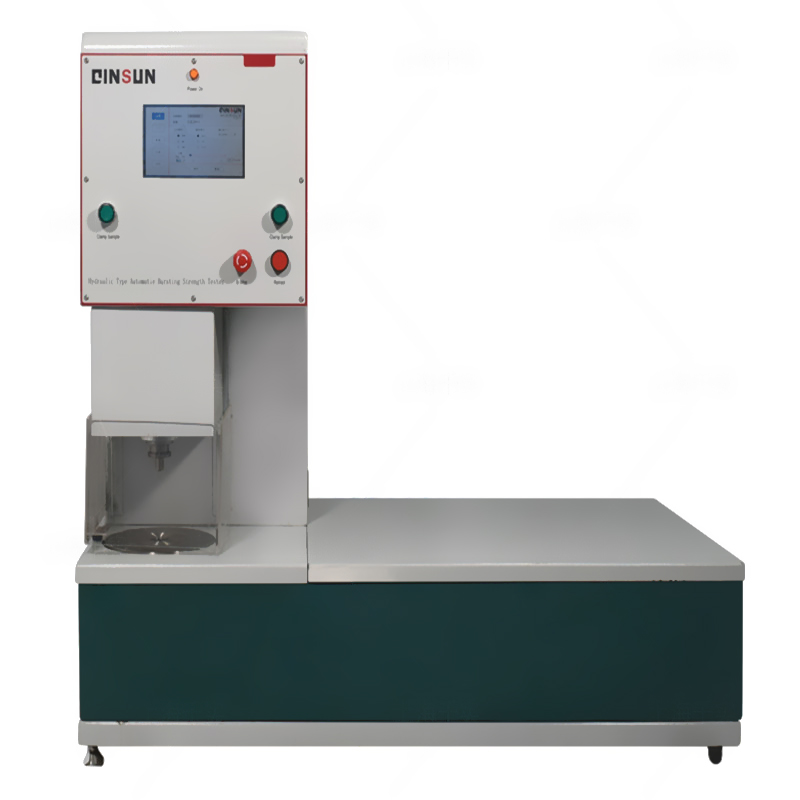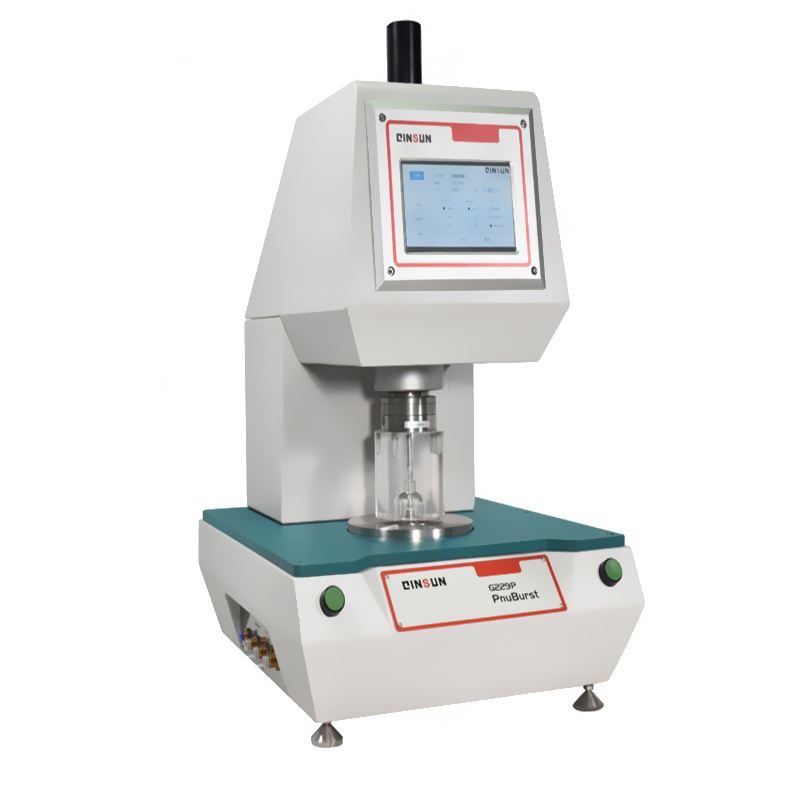
fabric bursting strength tester testing principle and steps
2024/03/27
Fabric bursting mechanism:
Similar to the mechanism of fabric bursting, different types of fabrics have different mechanisms of bursting.
For woven fabrics, when the fabric swells, it deforms in the non warp and weft directions. This is caused by the mutual shear of the warp and weft yarns, and their elongation deformation is greater than that in the warp and weft directions. Under pressure, the yarns first break in the direction with lower deformation capacity and weaker strength, and then tear relative to each other along the warp or weft directions. Therefore, the cracks are generally linear. If the warp and weft deformation ability of the fabric is similar, and the warp and weft yarns are close to breaking at the same time when bursting, the crack is often in the shape of L or T, indicating that the warp and weft yarns are working together, and the bursting strength is higher than that of linear cracks.
For knitted fabrics, when the fabric bursts, each coil is hooked and connected together to withstand elongation deformation until the fabric tears.
For non-woven fabrics, the main causes are fiber breakage and fiber mesh loosening. The top break is a raised loose fiber bundle, while the bulging is the tearing and loosening of the fiber mesh.

Testing principle:
When testing the bursting performance of fabrics, the sample is clamped on an extendable membrane and pressure is applied underneath the membrane (manual liquid pressure, electric liquid pressure, or gas pressure, etc.) to expand the membrane and sample. The pressure is increased at a constant rate until the sample ruptures, and the bursting strength or bursting expansion is measured.
Testing standards:
The Chinese national standard GB/T 7742 Part 1 and Part 2 respectively specify two methods for testing the bursting strength of fabrics: hydraulic method and pneumatic method. At the same time, this standard is equivalent to using ISO 13938.1 and ISO 13938.2 standards. In addition, the commonly used standard is ASTM D3786, which specifies the testing methods for the bursting performance of fabrics, including the operation methods of manual and electric hydraulic testers and pneumatic testers. In practical testing, the hydraulic method is more widely used than the pneumatic method to test the bursting performance of fabrics.
Using different standards may result in slightly different technical conditions. When using the hydraulic method for testing, GB/T 7742.1 and ISO 13938.1 stipulate that the testing area can be recommended as 50mm2, with a constant pressure rate between 100-500cm3/min, or through pre experiments, a pressure rate that ensures that the fabric is burst in about 20s can be used; The recommended testing area for ASTM D3786 is 125mm3, and the pressurization rate is 95 ± 5ml/min.

Test steps:
1) Sample preparation: Cut the sample according to the standard or agreed size, and adjust the humidity in a relaxed state; Place the sample on the membrane and clamp it with a clamping ring;
2) Instrument setting: Set a constant pressure growth rate; Instrument zeroing;
3) Testing: Apply pressure to the specimen until it fails; After the sample is damaged, immediately reset the instrument and record the breaking pressure, bursting height, or bursting volume; (Each group of samples should be tested at different positions at least five times)
4. Measurement of membrane pressure: Using the same test area, volume growth rate, or rupture time as the above test, the membrane is expanded without a specimen until the average rupture height or average rupture volume with a specimen is reached. The rupture pressure is used as the diaphragm pressure.
5. Data recording: Calculate the average value of the bursting pressure. Subtracting the membrane pressure from this value is the bursting strength of the specimen.
Previous: Martindale wear resistance and pilling tester operate precautions
N e x t : fabric pendulum tear strength tester standards and principles



